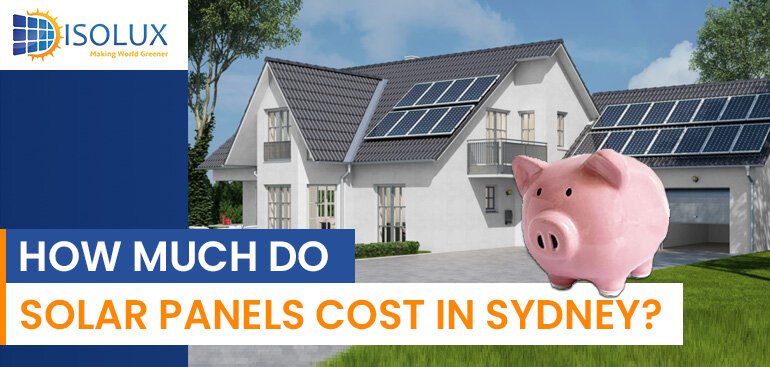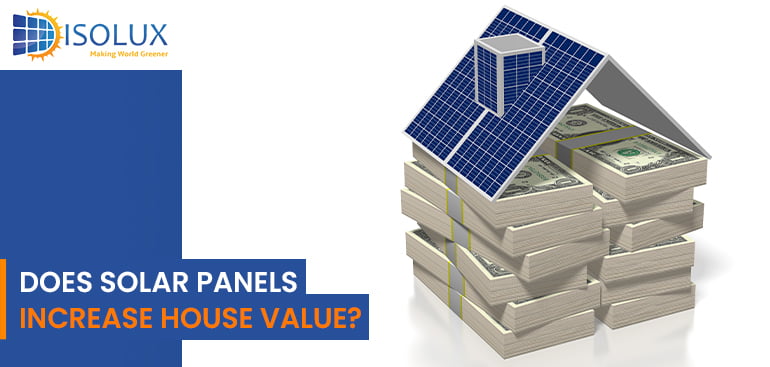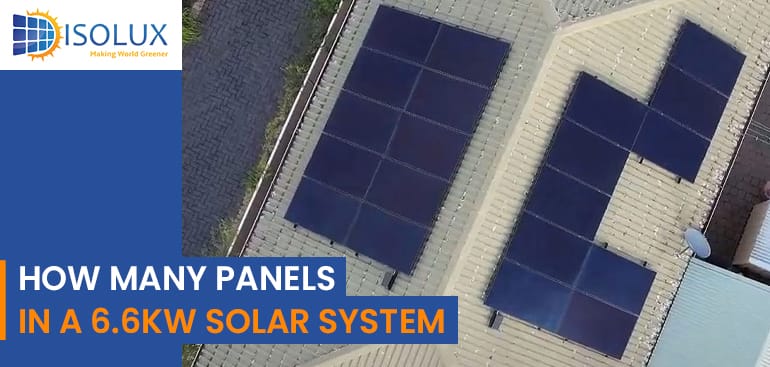Sydney is a bustling city with a growing population and increasing energy demand every day. As the price of electricity rises, many homeowners are turning to solar energy as a cost-effective and eco-friendly alternative.
Thinking about switching to solar energy but wondering, “How much does a solar panel cost in Sydney?”
You’re not alone. As Sydney homes face rising electricity prices and increasing demand for cleaner energy, solar panels are becoming one of the smartest investments for homeowners.
In 2025, the average cost of a fully installed solar panel system in Sydney ranges between $4,500 to $9,000, depending on system size, panel quality, and installer expertise. With generous government rebates and improved technology, solar energy has never been more affordable — or more rewarding.
In this guide, we’ll break down the current solar panel prices in Sydney, explain rebates and incentives, explore how many panels you might need, and help you understand your potential return on investment (ROI).
By the end, you’ll have a clear idea of how to make the best choice for your home and your future energy savings.
To answer all the related question, we must take into account several factors, including the size of the solar panel system, the type of solar panels, and the location of the installation. The cost of solar panels and what you can expect to pay for a system that meets your specific energy needs.
How Much Does the Solar Panel System Cost in Sydney?
As of April 2025, In Sydney, home solar panel system of 6.6kW and a high-quality installation will cost between $4,500.00 to $9,000.00.
Here is the approximate cost of a solar system installation with Tier 1 solar panels.
| System size | Number of panels | Cost Range |
| 1.5kW | 4 | $2,500 – $4,000 |
| 2kW | 5 | $3,000 – $4,500 |
| 3kW | 7 | $3,500 – $5,000 |
| 4kW | 10 | $4,000 – $6,000 |
| 5kW | 12 | $5000 – $7,000 |
| 6.6kW | 16 | $4,000 – $8,000 |
| 7kW | 17 | $6,500 – $10,000 |
| 8kW | 19 | $7,500 – $11,000 |
| 10kW | 24 | $8,000 – $13,000 |
Many Australians are trying to figure out the price of solar panels and their installation costs for their residential properties. As the price of electricity in Australia skyrockets, many are considering installing the best solar panels in Sydney on their premises.
The price of solar panels in Australia has significantly dropped. A decade ago, it would cost around $10,000 for a 1kW system, but now you can get a larger system with more capacity for the same price. Additionally, the price you pay for a solar PV system in 2023 is heavily subsidized by the Australian government’s solar rebate scheme. The value of the rebate fluctuates based on Small-scale Technology Certificates (STCs).
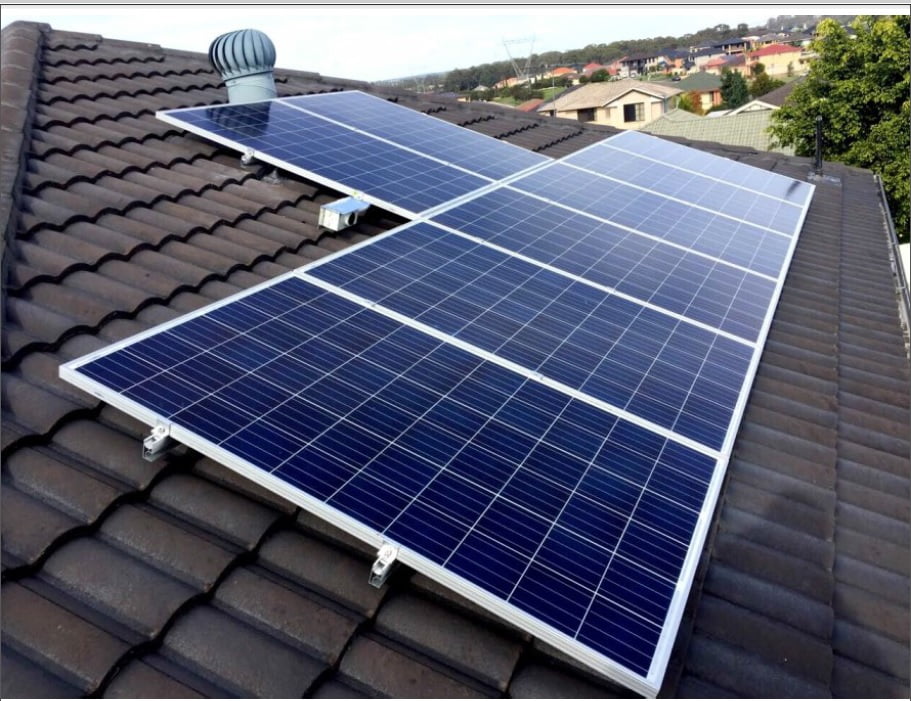
What is the Average Cost of Solar Panels in Sydney?
The average cost of solar panels in Sydney typically ranges from $0.50 to $1.20 per watt after federal rebates or government rebate. This translates to around $5,200 to $6,500 for a common 6.6kW residential solar system.
Here’s a quick look at the average cost per watt based on panel quality:
| Panel Quality | Cost per Watt (After Rebate) | Example Brands |
|---|---|---|
| Entry-Level | $0.50 – $0.70 | Jinko, Seraphim |
| Mid-Range | $0.70 – $1.00 | Trina, Canadian Solar |
| Premium | $1.00 – $1.20 | SunPower, REC, Q Cells |
Important Insight:
- The cheapest solar panels aren’t always the best deal. Mid-range or premium panels may cost more upfront but often come with better warranties, higher efficiency, and longer lifespan — which means more savings in the long run.
- Sydney’s sunlight conditions are ideal for solar, making it easier to get great performance even from mid-tier options.
Solar Rebates and Incentives in Sydney (2025 Update)
Installing solar panels in Sydney is more affordable in 2025, thanks to a combination of federal and state incentives that significantly reduce upfront costs.
Federal STC Rebate (Small-scale Technology Certificates)
Under the Australian Government’s Small-scale Renewable Energy Scheme (SRES), homeowners receive Small-scale Technology Certificates (STCs) when they install eligible solar systems. These certificates can be traded for a discount on the installation cost.
- Rebate Value: Approximately $36–$38 per STC.
- Example: A typical 6.6kW system in Sydney (Zone 3) generates about 91 STCs, equating to a rebate of around $3,276 at $36 per STC.
Note: The number of STCs decreases annually until the scheme ends in 2030, so earlier installation maximizes your rebate.
NSW Solar Battery Rebate (Peak Demand Reduction Scheme)
The NSW Government offers incentives for battery installations to help households store excess solar energy and reduce reliance on the grid.
- Rebate Amount: Between $1,600 and $2,400, depending on battery size.
- Additional Incentive: $250–$400 for connecting your battery to a Virtual Power Plant (VPP).
Eligibility Criteria:
- Must have an existing solar panel system.
- Battery capacity between 2kWh and 28kWh.
- Installation by an approved supplier under the scheme.
These rebates are applied as upfront discounts through participating installers.
Upcoming Federal Battery Rebate (Cheaper Home Batteries Program)
Set to commence on July 1, 2025, the Australian Government’s proposed Cheaper Home Batteries Program aims to further reduce battery installation costs.
- Rebate Value: Approximately $350 per kilowatt-hour (kWh) of usable battery capacity, potentially covering up to 30% of the total cost.
- Eligibility:
- Battery systems between 5kWh and 50kWh.
- Installation after July 1, 2025.
- Battery must be Virtual Power Plant (VPP) capable and installed by a Clean Energy Council (CEC) accredited installer.
This federal rebate can be combined with the NSW battery rebate, offering substantial savings for eligible homeowners.
Why Does the Cost of Solar Panels Differ in Australia?
A 9.9 kW solar system would cost between $4,450 and $5,550 in Sydney. Do you know what causes this difference? The rebate each state pays per kWh of electricity produced by the solar system varies. Additionally, the number of solar panels required to generate the same amount of electricity differs from one state to another.
The cost of solar panel installations varies significantly across Australia due to several regional factors. Understanding these differences can help homeowners make informed decisions when considering solar energy solutions.
1. Labor Costs and Installer Availability
Labor expenses can differ between urban and rural areas. In metropolitan regions like Sydney, a higher concentration of certified installers often leads to competitive pricing. Conversely, remote areas may experience increased labor costs due to limited installer availability and additional travel expenses.
2. Regulatory Requirements and Permitting
Each state and territory has its own set of regulations and permitting processes for solar installations. For instance, some regions may have streamlined digital permitting systems, reducing administrative overhead and costs. Others might have more complex requirements, potentially increasing the overall installation cost.
3. State-Specific Incentives and Rebates
State governments offer varying incentives that can affect the net cost of solar systems. For example, New South Wales provides rebates for solar battery installations, which can significantly reduce the total investment for homeowners opting for storage solutions.
4. Geographical and Climatic Conditions
Australia’s diverse climate impacts solar panel efficiency and installation logistics. Regions with higher solar irradiance, like Queensland, can achieve greater energy yields, potentially requiring smaller systems. In contrast, areas with less sunlight may need larger systems to meet energy demands, influencing the overall cost.
5. Market Competition and Equipment Availability
The level of competition among solar providers varies by region. Urban areas often have more suppliers, leading to competitive pricing and a wider selection of equipment. Rural regions might face limited options, affecting both cost and equipment choices.
How Much Does One Solar Panel Cost in Australia?
The cost of a single solar panel in Australia generally ranges between $200 and $400, depending on the brand, wattage, and quality. Most residential solar panels today are rated between 350W to 450W, which means you’d need about 15 to 20 panels for a typical 6.6kW system.
Here’s a quick breakdown:
| Panel Type | Power Output (Watt) | Price Range (AUD) | Ideal For |
|---|---|---|---|
| Entry-Level Panels | 350W – 380W | $180 – $240 | Budget-conscious households |
| Mid-Range Panels | 380W – 420W | $240 – $300 | Standard residential systems |
| Premium Panels | 420W – 450W+ | $300 – $400+ | High-efficiency/limited space |
Home Solar Panels: For residential solar panels in Australia, you can expect to pay anywhere from $200 to $400 per panel. These panels typically range from 250 to 400 watts.
Commercial: Larger, higher-capacity panels used for commercial or industrial purposes can cost more, ranging from $300 to $600 or more per panel.
Premium or High-Efficiency Panels: Premium or high-efficiency solar panels from well-known brands often come at a higher price point, ranging from $400 to $800 or more per panel.
Please note that these prices are approximate and may have changed in real time. The best way to get accurate pricing for solar panels in Australia is to contact local solar panel installation companies and request quotes based on your specific requirements. Additionally, government rebates and incentives are available to help reduce the cost of solar panel system installation. The price can also vary depending on your location within Australia.
How Many Solar Panels are Needed to Power the Entire House?
The number of solar panels you need to power your entire home depends on your daily electricity usage, panel wattage, and roof size. In Sydney, where households receive generous sunlight throughout the year, a well-sized system can easily cover 100% of your usage.
Here’s a general guide based on average household sizes:
| Home Size | Avg. Daily Usage (kWh) | Recommended System Size | Number of Panels (Based on 400W) |
|---|---|---|---|
| Small (1–2 people) | 8–12 kWh | 3kW – 4kW | 8 – 10 panels |
| Medium (3–4 people) | 13–18 kWh | 5kW – 6.6kW | 13 – 17 panels |
| Large (5+ people) | 19–28 kWh | 8kW – 10kW | 20 – 25+ panels |
Read Related Blog: How Many Solar Panels Do I Need To Power My House
Example:
If your average electricity bill is around $300 per quarter, you’re likely consuming about 15 kWh per day. A 6.6kW solar system (roughly 16–18 panels) should be able to offset most of your energy usage — even more if paired with a battery.
Important Factors That Affect Panel Count:
- Roof space & orientation
- Shading from trees/buildings
- Panel wattage (higher watt = fewer needed)
- Energy efficiency of your appliances
Tip:
Most Sydney homes go for a 6.6kW solar system, which strikes the right balance between cost, efficiency, and rebate eligibility. If you’re planning to add an EV or battery in the future, consider sizing up.
Factors Influence the Cost of Solar Panels in Sydney
1. Location of your property
2. Amount of energy needed
3. Size of the solar panel system
4. Place where the solar system will be mounted
5. Nature of the solar panels used
Here are the various factors that directly influence solar panel cost in Sydney.
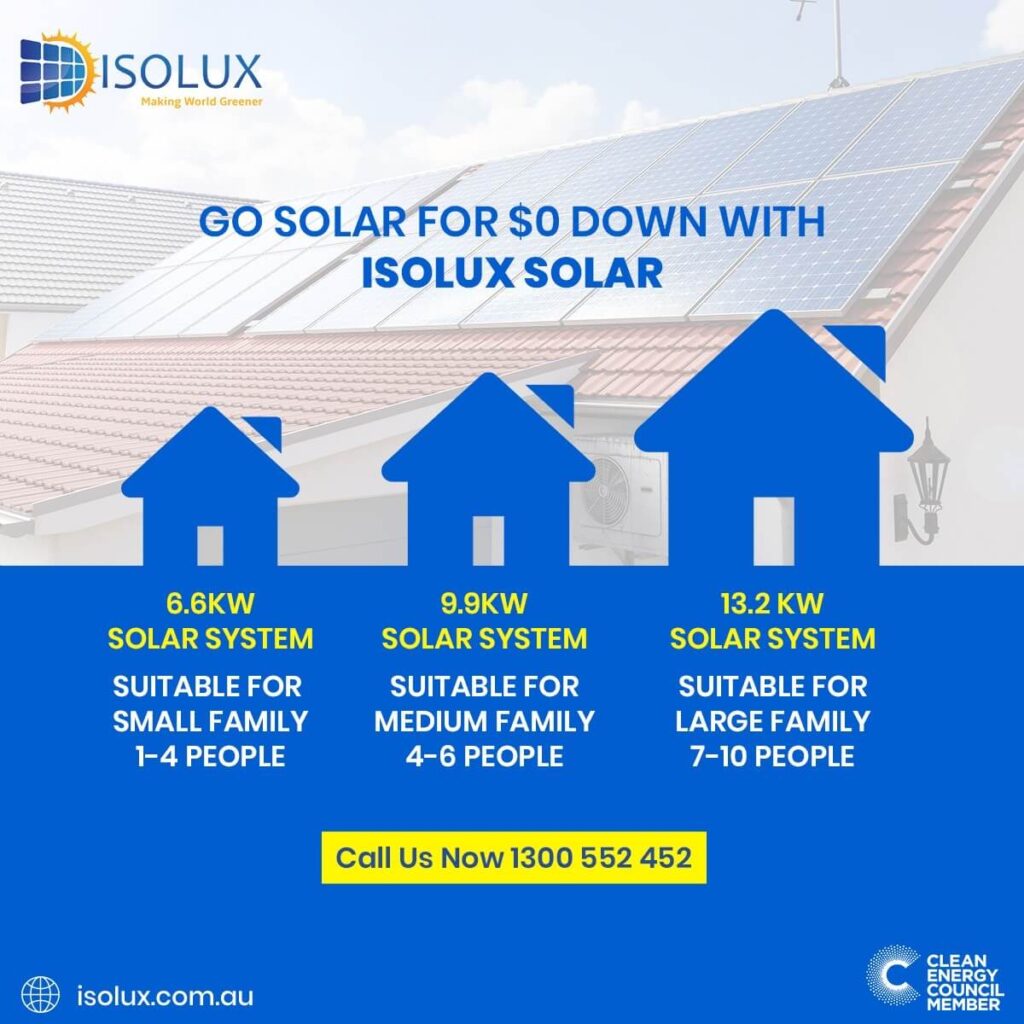
Types of Solar Panels
When choosing a solar panel system for your Sydney home, it’s important to understand the different panel types available in the market. Each type has its own advantages in terms of efficiency, aesthetics, and cost — and your choice can influence both performance and pricing.
Here are the three main types of solar panels used in residential installations:
1. Monocrystalline Solar Panels (Mono)
- Efficiency: 18%–22%
- Appearance: Sleek, black, uniform look
- Price: Premium
- Lifespan: 25–30 years
Best for: Homes with limited roof space or where aesthetics and high performance are priorities.
Why Choose Mono?
They’re the most efficient and space-saving option, ideal for Sydney homes with medium to high electricity needs.
2. Polycrystalline Solar Panels (Poly)
- Efficiency: 15%–17%
- Appearance: Blue with a speckled texture
- Price: More affordable
- Lifespan: 20–25 years
Best for: Budget-conscious homeowners with ample roof space.
Why Choose Poly?
They’re slightly less efficient but still reliable and durable — offering great value for those wanting to save on upfront costs.
3. Thin-Film Solar Panels
- Efficiency: 10%–13%
- Appearance: Flexible, lightweight
- Price: Variable (depends on material type)
- Lifespan: 10–20 years
Best for: Niche applications (RV, curved roofs, or commercial settings)
Why Choose Thin-Film?
Not typically used for residential rooftops, but useful when flexibility or light weight is essential.
Quick Comparison:
| Panel Type | Efficiency | Cost | Roof Space Needed | Aesthetic |
|---|---|---|---|---|
| Monocrystalline | High | High | Low | Sleek |
| Polycrystalline | Medium | Medium | Medium | Standard |
| Thin-Film | Low | Variable | High | Plain |
Location of Solar Panel Installation
The location of your solar panel installation — especially roof orientation, angle, and shading — plays a huge role in how much energy your system can generate. Even in sunny Sydney, optimizing your setup ensures you get the maximum return on investment.
1. Roof Orientation (Direction Facing)
In Sydney, the ideal roof orientation is north-facing, which allows panels to receive sunlight throughout the day.
- North-facing: Best for all-day sun exposure.
- West-facing: Good for capturing afternoon sun (great if you’re home in the evenings).
- East-facing: Captures morning sun (less effective later in the day).
- South-facing: Least efficient — usually avoided unless no other options are available.
2. Roof Angle and Tilt
- Sydney is located at about 33.9° latitude, so a tilt angle of 20° to 35° is generally recommended for fixed solar systems.
- Some installers use tilt brackets on flat roofs to optimize the angle for better energy absorption.
Pro Tip: A system tilted at the optimal angle reduces dirt buildup and helps panels self-clean during rain.
3. Shading from Trees or Buildings
Shadows from nearby trees, antennas, chimneys, or tall buildings can reduce your system’s efficiency.
Use a solar performance tool or shade analysis during your site inspection to identify and avoid major losses.
Even partial shading on one panel in a string can reduce the output of the entire array — unless you’re using microinverters or optimisers.
4. Roof Material and Condition
- Metal and tin roofs: Easiest and cheapest to install on.
- Tile roofs: May require extra care and cost due to the risk of breakage.
- Flat concrete roofs: May need tilt frames and ballasts.
Ensure your roof is in good condition before installation — solar panels typically last 25+ years, and so should your roof!
Bonus: Ground-Mounted Panels
If you have plenty of open land and limited roof space, ground-mounted systems can be an excellent option — though they usually come with slightly higher installation costs and council approval requirements.
Summary Table:
| Factor | Best Practice in Sydney |
|---|---|
| Orientation | North-facing for max output |
| Tilt Angle | 20°–35° for optimal performance |
| Shading | Minimise with strategic placement or microinverters |
| Roof Type | Metal = easiest; tile = more labour intensive |
Benefits of Solar Energy
Aside from the cost savings, there are several other benefits to using solar energy in Sydney. Solar panels are an eco-friendly source of energy, reducing your carbon footprint and helping to preserve the environment for future generations. They also increase the value of your home, making your property more attractive to potential buyers. Finally, solar panels are a reliable source of energy, providing you with a steady supply of electricity even during power outages.
How Do Solar Panels Work?
Solar panels are made of photovoltaic cells that convert the sun’s energy into electricity. Layers of semiconducting material, such as silicon, are used to sandwich the photovoltaic cells. Each layer has different electronic properties that are energized by photons from sunlight, creating an electric field. This process is called the photovoltaic effect.
At Isolux, we have installed solar systems of various sizes and designed them according to individual needs. A solar panel system can be customized, as one size does not fit all. We believe in providing high-quality solar panel systems, and we’ll help you choose the right one for your needs.
How to Choose the Right Solar Panel?
Here is what sized solar system you need. It will help you find accurate solar panel costs in Sydney, NSW:
6.6 kW Solar System
1. Ideal for a small family
2. Output generated: 9,500 – 10,500 kWh/year
3. Best suited for bills: $250 – $400
9.9 kW Solar System
1. Ideal for a medium family
2. Output generated: 14,900 – 15,330 kWh/year
3. Best suited for bills: $450 – $600
13.2 kW Solar System
1. Ideal for a large family
2. Output generated: 18,900 – 19,300 kWh/year
3. Best suited for bills: $600+
Conclusion
The cost of solar panels in Sydney ranges from $2,500 to $13,000, with the average cost being around $6,000. This cost includes the solar panels, inverters, installation, and any necessary permits or inspections. The final cost is influenced by factors such as the size of your system, the type of panels used, and the location of your installation. Despite variations in cost, the benefits of using solar energy in Sydney, including cost savings, eco-friendliness, increased home value, and reliability, make it a smart investment for any homeowner.
Isolux Solar is one of the most popular and CEC-accredited solar installers. We will help you choose the right solar panels with battery and inverter. To initiate the conversation with Isolux, call now at 1300 552 452.
Read Next Blog:
Key Information About Solar Inverters and How Does It Work
Step-by-Step Process of Electricity Generation from Solar Panels

